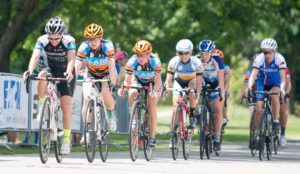People enter the world of endurance sports for a lot of different reasons. Some common ones include: weight loss, the desire to maintain an active lifestyle, and the desire to have a competitive outlet. It is important to be cognizant of your goals in the sport – if you aren’t you may fall into the trap of living your life in conflict to those goals.
 Not that many years ago, I was training for performance. However, I refused to fuel properly to meet my goals. Having those two key ingredients to racing success at odds with each other wreaked havoc on my body. Overuse injuries, undoubtedly the result of overtraining and underfueling, plagued me. Even now, years later, my body is much more fragile than that of my peers and it doesn’t take a lot for me to suffer one injury after another. Additionally, I started to notice issues with distance training. I would become incredibly weak during workouts because I refused to fuel during them. Not an issue if you’re doing a 30 minute easy run, but definitely an issue if you are hammering out a 20-miler. It’s taken years for me to come to terms with fueling my body for performance. Here’s what I learned.
Not that many years ago, I was training for performance. However, I refused to fuel properly to meet my goals. Having those two key ingredients to racing success at odds with each other wreaked havoc on my body. Overuse injuries, undoubtedly the result of overtraining and underfueling, plagued me. Even now, years later, my body is much more fragile than that of my peers and it doesn’t take a lot for me to suffer one injury after another. Additionally, I started to notice issues with distance training. I would become incredibly weak during workouts because I refused to fuel during them. Not an issue if you’re doing a 30 minute easy run, but definitely an issue if you are hammering out a 20-miler. It’s taken years for me to come to terms with fueling my body for performance. Here’s what I learned.
In the book “The Well-Built Triathlete,” Matt Dixon spells out the lessons it’s taken me years to put into action. Nutrition and fueling are two wholly different, yet synergistic, things. Your nutrition comprises your day-to-day food choices. Fueling is eating specific things during specific time windows to maximize performance and recovery. Clearly, you cannot achieve your full potential as an athlete if your nutrition is terrible, but fueling is something that many athletes do not focus enough on. For me, separating my fueling from nutrition allowed me to begin to eat enough to reach my performance goals. I picture fueling as putting high octane fuel in a sports car. You can’t make it around the track with your tank on empty, and you can’t get away with just putting junk in the tank either. Viewing my body as a high-performance engine and treating it as such was the single most effective mindset that allowed me to break through my mental barriers surrounding food.
Fueling: Unless you are attempting to become a fat-adapted athlete, it is recommended to fuel before workouts to maximize your efficiency. The pre-training window for fuel is variable. Experts recommend eating 1.5-3 hours before beginning your workout. However, if you read my last post about being a time-crunched athlete, you can bet I don’t eat breakfast at 1 am. A quick snack that is approximately half carb and ¼ each of protein and fat and balances out to 200-400 calories is a great way to pre-fuel for your workout. Depending on the intensity of the workout, this can be consumed 15-30 minutes before you begin. During training, recommendations range from 30-60 grams of carbohydrates per hour. It’s important to keep yourself fueled throughout workouts! I struggle to eat gels and solid foods so I recommend using a liquid calorie source such as Infinit to reach your calorie goals without gastrointestinal upset. Post-workout it is essential to eat within 60 minutes (preferably 30) of the end of the workout. A ratio of 3:1 carbs to protein is ideal. This will help jumpstart your recovery.
Nutrition is its own incredibly complex topic. I won’t talk about it now or this post could become a book! However, don’t forget to pay attention to your daily diet to be the healthiest, most wholesome athlete you can be.










